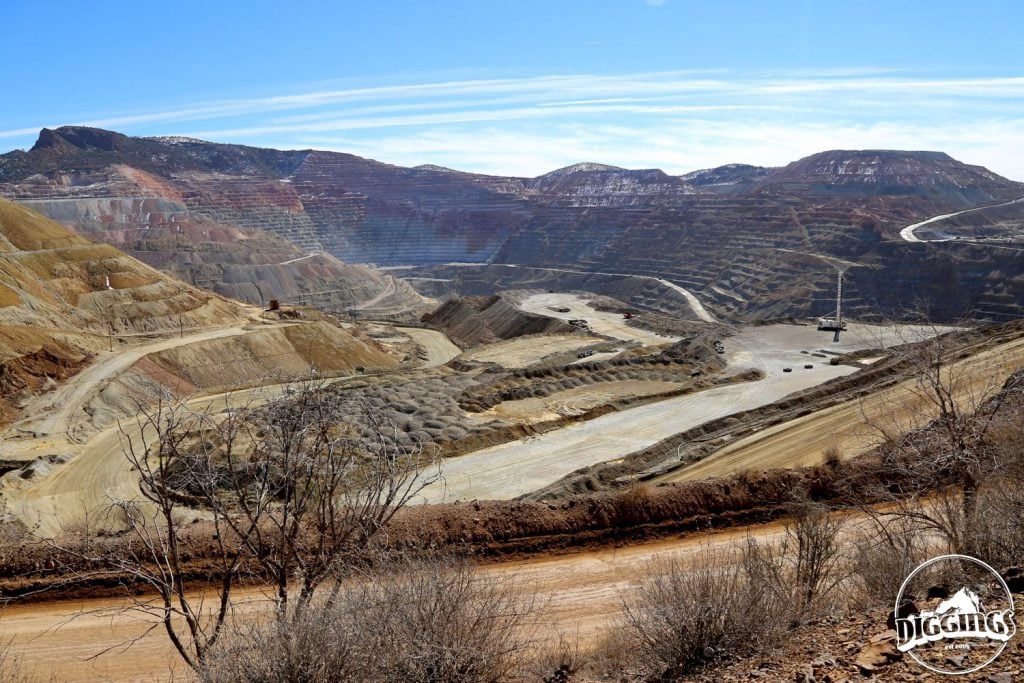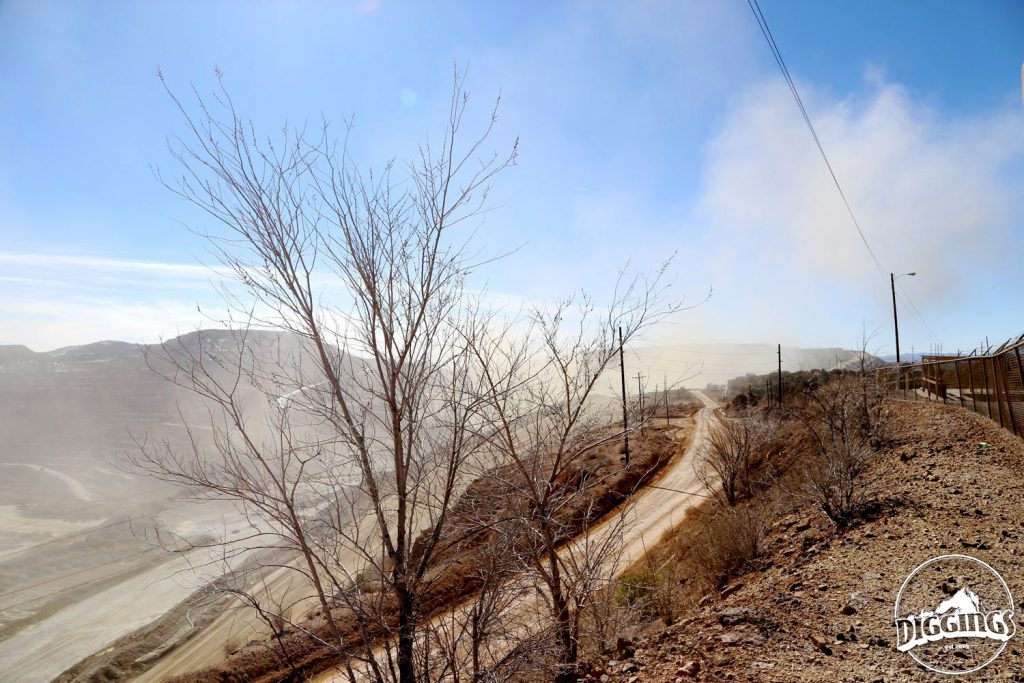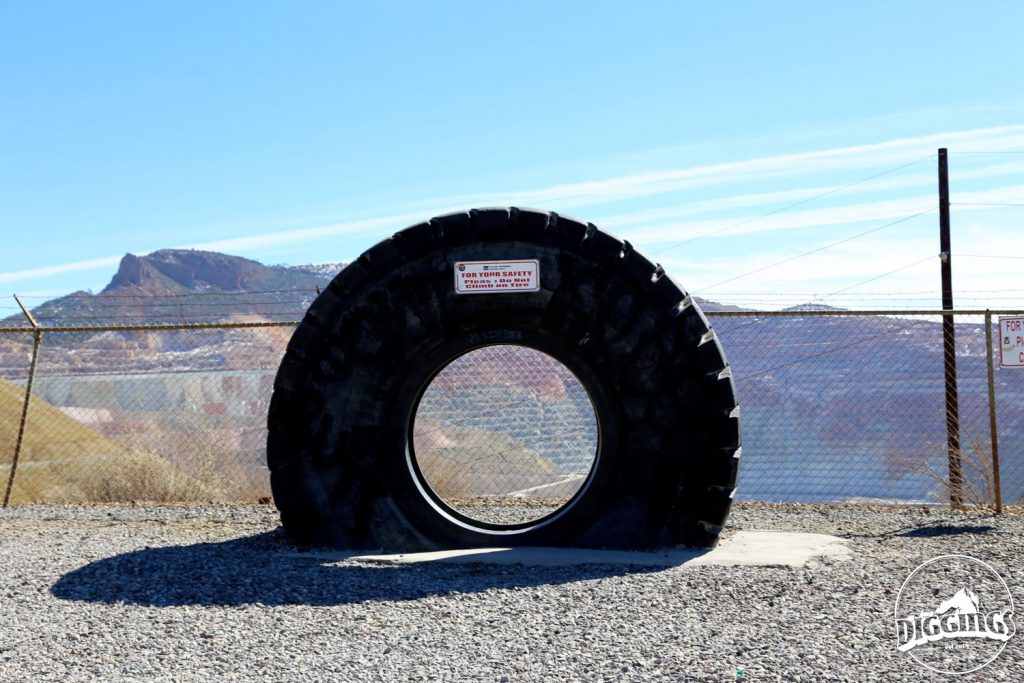Chino Mine
Santa Rita, New Mexico
(32°47’30.3″N 108°04’02.2″W)
Hours
Not Applicable
Admission
Free
Chino Mine is one of New Mexico’s standout mines and host to many historic events in mining. It was a critical copper mine supporting Spain’s New World holdings in the early 1800s. It was the hub for many burgeoning mining towns after the Civil War. And it became the test site for one of mining’s most significant innovations: open pit mining. While still an active operation, the diggings are easily observable from a viewing deck which is open daily.
Santa Rita del Cobre
Origins of the Chino Mine
Surface deposits of natural copper have long been collected by native people in the area for ornaments, weapons, and trade. Yet, mineral collection is taken to the next level as Spaniards begin mining the area.
Manuel Carrasco, a retired lieutenant colonel of the Spanish army is the first to stake a copper claim in 1801, the Santa Rita del Cobre Grant, with the financial aid and influence of Don Francisco Manuel de Elguea, a wealthy Chihuahua merchant. Carrasco had been aware of the deposit in 1798, when he was shown an outcrop of copper by an Apache Indian, but he lacked the finances and time to mine the location by himself.
By 1804, most of the mining claims are consolidated by Don Francisco Manuel de Elguea who ships the mined copper 400 miles to Chihuahua City, destined for Mexico City and the Mexican mint. Historians estimate that 20,000, 300-pound loads arrived in Mexico City, annually. As silver and gold was shipped back to Spain, the Spanish New World territory relied on copper as coinage for their internal trade.
Yet, with the death of Elguea in 1809, mining diminishes. Though profitable, the mine is not self sustaining. Without an existing population to hire, Mexican prisoners have to be imported to work the mines. Mining continues, not on the scale achieved under Elguea and despite Apache raids, yet it continues as the land transfers from Spain to Mexico to the United States.
With the close of the Civil War and history of copper wealth, Santa Rita became a popular destination for aspiring miners. Along with its own mines, the settlement became a hub as miners venture out to discover and exploit other deposits in the region, such as Pinos Altos and Silver city.
Nevertheless, In the face of its long mining history, what would truly set Santa Rita apart was yet to come.
Open Pit Mining: A Breakthrough In Mineral Extraction
In 1909, the Chino Mine becomes the the first site for “open-pit” mining under the Chino Copper Company. The railroad arrives in Santa Rita* in 1898, allowing for massive amounts of copper to be transported. In 1905, John M. Sully determines that the many tunnel mines riddling the region are all accessing a single, massive copper body. The time is right for Daniel C. Jacking’s revolutionary method of open-it mining: removing the ground above (overburden) to access mineral rich ore in a large pit rather than many, individual winding tunnels. While it is a massive undertaking, the Chino Open Pit Mine continues to run today, under Freeport-MacMoRan Copper & Gold Inc.

Chino Mine Today
Mining continues at the Chino Mine—24-hours a day, 365 days a year—though the techniques have been updated. Over 2 billion tons of material has been excavated since 1910, leaving a pit 1,600 feet deep and a mile across. The Chino Mine produces around 2-hundred million bounds of copper each year. Yet, not only is the pit continually mined, but played out portions have been in the process of reclamation since 2008.
Visiting the Chino Mine
The general public can still see the Chino Mine via an observation point. The location is accessible immediately off of 152. A Google map search will direct you to the main mine works entrance off of 356, which is not the viewing point. Instead, enter “32.7917425 N, 108.0672635 W”—the latitude and longitude of the actual viewing station and navigate there.

We were psyched to feel the earth shake under our feat, hearing a massive concussion, and realized a blast had just occurred. From a corner of the pit, dust rises, and slowly obscures the sky. The Chino Mine is a standout opportunity to see mining history still in action.

* The town of Santa Rita was moved, starting in 1950s, when it was discovered that it was located on top of a large ore body. Today, all that remains are photographs and those who were born in the now demolished Santa Rita Hospital consider themselves members of an exclusive club of people who were “born in space.”
